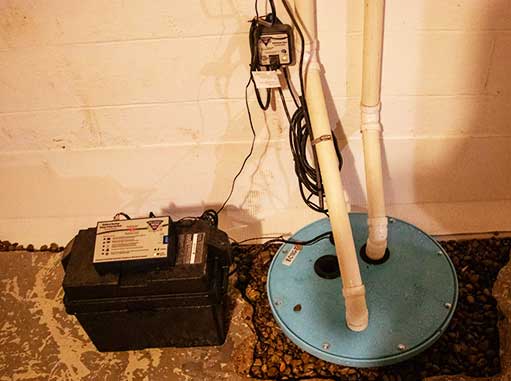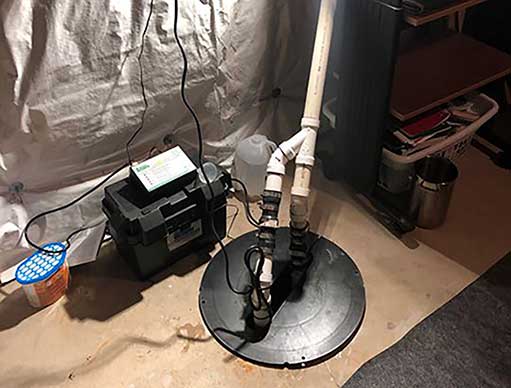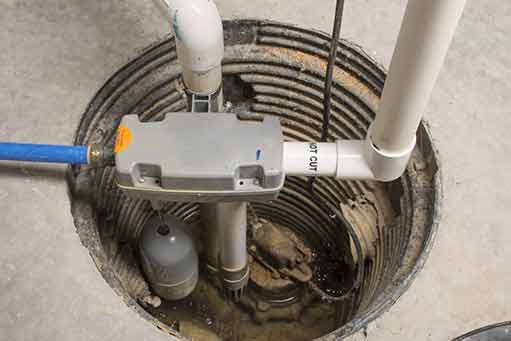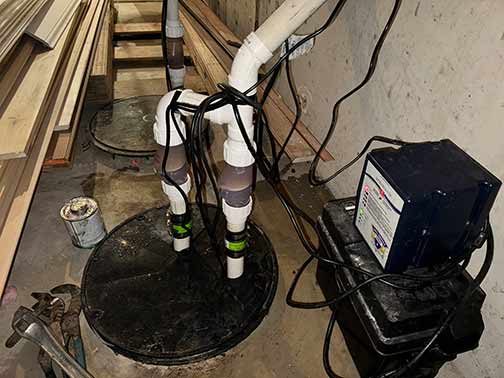Why Investing in a Reliable Sump Pump Battery Backup is Crucial
When it comes to protecting your home from potential flooding and water damage, a reliable sump pump is an essential component. However, relying solely on your main sump pump may not always be enough, especially during power outages or when the primary pump fails. This is where investing in a reliable sump pump battery backup becomes crucial. Below we get into the importance of having a backup system in place and why it is worth considering for every homeowner.
The Dangers of Flooding
Before discussing the importance of a sump pump battery backup, let’s first address the potential dangers of flooding. Flooding can occur due to heavy rain, melting snow, or even plumbing failures. The consequences of a flooded basement or crawl space can be devastating, leading to structural damage, mold growth, and a loss of personal belongings. It’s not just the immediate damage that poses a threat; floodwaters can also compromise the structural integrity of your home over time.
With these risks in mind, it is vital to have a reliable sump pump system installed to keep your home dry and protected. While a main sump pump plays a significant role in preventing flooding, it can be rendered useless during power outages or mechanical failures. This is where a battery backup system comes into play.
The Role of a Sump Pump Battery Backup
A sump pump battery backup acts as a fail-safe when your main pump is unable to operate. It serves as a second line of defense, ensuring that water is continuously pumped out of your basement or crawl space, even during power outages. By investing in a reliable battery backup system, you can have peace of mind knowing that your home is protected, regardless of the circumstances.
It is important to note that not all battery backup systems are created equal. When choosing a sump pump battery backup, it is crucial to consider factors such as battery life, pumping capacity, and ease of installation. Opting for a high-quality, durable backup system ensures that it will perform reliably when you need it most.
The Benefits of Investing in a Reliable Sump Pump Battery Backup
Protection during Power Outages
One of the main advantages of a sump pump battery backup is its ability to operate during power outages. Storms or other events can cause electrical outages, leaving your main sump pump without power. Without a reliable backup in place, your basement or crawl space becomes vulnerable to flooding. A battery backup system ensures that water is continuously removed, providing protection regardless of the power situation.
Reliability in Mechanical Failure
In addition to power outages, mechanical failures can also leave your main sump pump incapacitated. Like any mechanical system, sump pumps can experience malfunctions or breakdowns. By investing in a battery backup system, you have a failsafe in place to pick up the slack when your primary pump fails. This redundancy significantly reduces the risk of flooding and the associated costs of water damage.
Reduced Insurance Premiums
Homeowner’s insurance typically covers water damage caused by unforeseen events, such as a burst pipe. However, insurance providers may increase premiums or exclude coverage for damage resulting from negligence or lack of maintenance. By investing in a reliable sump pump battery backup installation, you are demonstrating proactive measures to protect your home from flooding. This commitment to safeguarding your property can lead to reduced insurance premiums, saving you money in the long run.
Peace of Mind
Perhaps one of the most valuable benefits of investing in a reliable sump pump battery backup is the peace of mind it provides. Knowing that your home is protected against potential floods can alleviate stress and anxiety, especially during severe weather events. Instead of worrying about the possibility of water damage, you can focus on other aspects of your life, confident that your property is well-prepared.

Photo Courtesy of @Mountain Valley Foundation Service
Considerations When Choosing a Sump Pump Battery Backup
When selecting a sump pump battery backup, it is essential to consider a few key factors:
Battery Life
Look for a backup system with a long battery life. The longer the battery can power the pump, the more effective it will be in preventing flooding during extended power outages.
Pumping Capacity
Consider the pumping capacity of the backup system. It should be able to handle the maximum water flow your primary pump is capable of handling to ensure adequate protection.
Easy Installation
Choose a battery backup system that is easy to install and maintain. Some systems may require professional installation, while others are designed for easy DIY setup.
Battery Health Monitoring
Opt for a battery backup system that includes battery health monitoring features. This allows you to keep track of the battery’s condition and ensures that it is ready to perform when needed.
Investing in a reliable sump pump battery backup is crucial for every homeowner. The potential risks and costs associated with basement flooding make it essential to have a fail-safe system in place. Whether it’s protecting your home during power outages or mechanical failures, a battery backup ensures that water is continuously pumped out, providing the peace of mind you deserve. Choose a backup system that suits your specific needs and enjoy the benefits of a dry and protected home.


